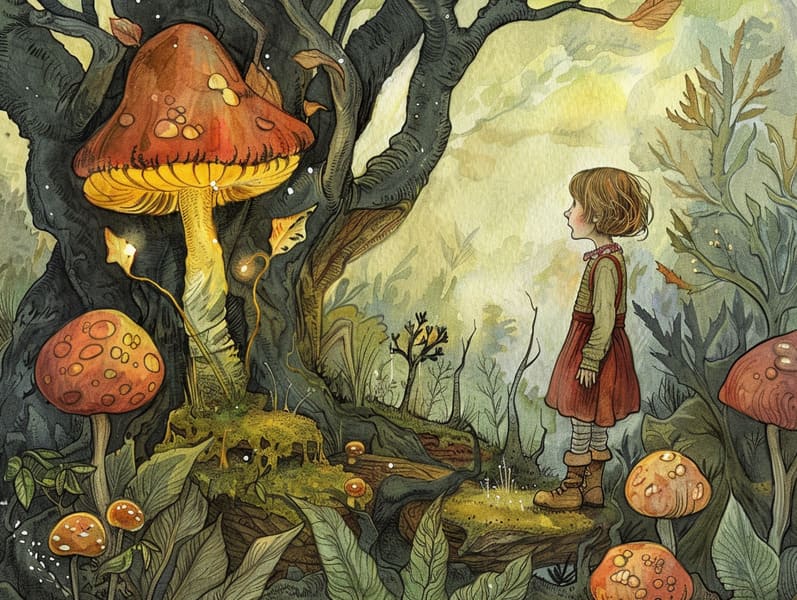The Dawn of Fairy Tales to Read with the Perpetual Captivation.
The Dawn of Fairy Tales to Read with the Perpetual Captivation.
Blog Article

Traditional fairy tales have timeless appeal. These stories have been told from one generation to the next centuries before they were ever recorded. They emerged from a variety of traditions, including Indigenous traditions. They were initially shared among adults, often carrying themes and messages reflective of the societal norms and beliefs of the time.
The Grimm brothers, Jacob and Wilhelm Grimm, were among the first to gather and publish many of these beloved fairy tales. Their collection, "Grimm's Fairy Stories," included stories like "The Story of Cinderella," "The Story of Hansel and Gretel," and "Snow White," which have since become essentials in the world of children's fairy tales. Similarly, H. C. Andersen's delightful tales, such as "The Sea Maid," and "The Story of the Ugly Duckling," have touched hearts worldwide, ensuring their place in the pantheon of beloved fairy tales.
Though they are old, these tales remain as significant as ever, especially as kids' bedtime tales. These enchanting tales are now available in multiple formats, including vibrantly illustrated books, captivating animations, and online fairy tales.
Their lasting appeal can be attributed to several fascinating points:
Significant Morals: Old fairy tales often whisper important moral lessons. Narratives like "The Tale of the Boy Who Cried Wolf" teach the significance of truthfulness, while "The Story of the Tortoise and the Hare" point out the benefits of determination and unpretentiousness. These stories offer little ones clear distinctions between ethical and unethical, helping to shape their moral compass in a gentle yet significant way.
Sympathy and Perception: Old fairy tales frequently illustrate individuals facing challenges and struggles, urging audiences to connect with their struggles and rally behind their triumphs. For instance, "The Tale of Beauty and the Beast" emphasizes the importance of looking deeper to understand the inner being of a being, cultivating empathy and perception.
Cultural Comprehension: Many fairy tales are interwoven with the cultural contexts from which they were born. Reading these tales can provide captivating looks into different traditions, promoting a sense of global insight and understanding.
Inventiveness and Imagination: The fanciful elements in ancient fairy tales—magical kingdoms—foster children’s fantasies. These tales move readers to fantasy realms, firing up innovative thinking and a sense of magic that remains a lifetime.
Classic fairy tales are not only captivating but also educational. They work as fascinating tools in advancing various cognitive and affective skills in young readers. When traditional fairy tales are read aloud, they enhance communication skills by introducing new terms and complex sentence structures. This practice also advances listening skills and mindfulness, as young readers follow the story, keen to see what happens next.
Furthermore, contemplating the themes and characters of old fairy tales can improve evaluative skills and thinking skills. Young readers learn to find patterns, foresee events, and understand cause and effect. These contemplations also further the young express their thoughts and feelings, cultivating their emotional intelligence.
In today’s information age, the accessibility of web-based fairy tales has made these tales more within reach than ever. Internet resources and software offer large libraries of old fairy tales that can be accessed or listened via anytime, anywhere. Fairy tales voiced are particularly liked, offering an captivating way for little ones to savor these whimsical stories. Sound books and spoken videos take characters and settings to life, often accompanied by enchanting melodies and music that improve the storytelling journey.
The persistent attraction of traditional fairy tales lies in their ability to alter to current times while keeping hold of their essential themes. Contemporary versions of these fairy tales often show more diverse protagonists and modern settings, making them relevant to today’s audience. However, the core values of fortitude, sympathy, and fairness remain unchanged, continuing to influence children of all ages.
Traditional fairy tales also offer a sense of ease and knowability. They bring a structured narrative with a straightforward beginning, middle, and end, often closing with the finalization of conflicts and the triumph of morality over wickedness. This consistency can be consoling for little ones, bringing a sense of solidity in an ever-changing world.
Old fairy tales continue check here to spellbind and inform new generations, maintaining their charm and meaningfulness in modern society. As children's bedtime stories, they bequeath a perfect blend of captivation and insight, cultivating moral values, empathy, and creativity. The availability of digital fairy tales and the prevalence of fairy tales read out loud validate that these ancient narratives remain within reach to new generations.
By protecting and relating these narratives, we continue to praise the rich tapestry of lore and cultural heritage. Whether you are discovering a colorful picture book, discovering a internet library, or listening on an narrated book, the radiance of popular fairy tales is always within reach. These narratives remind us of the unceasing power of tales and its ability to draw us together across generations and cultures.
Even if you are exploring a richly illustrated book, enjoying a electronic collection, or hearing an audiobook, the appeal of Grimm's fairy tales is always within reach.
These tales convey of the lasting effect of narratives and its ability to hold us together across epochs and places, establishing a link that captivates and teaches alike.